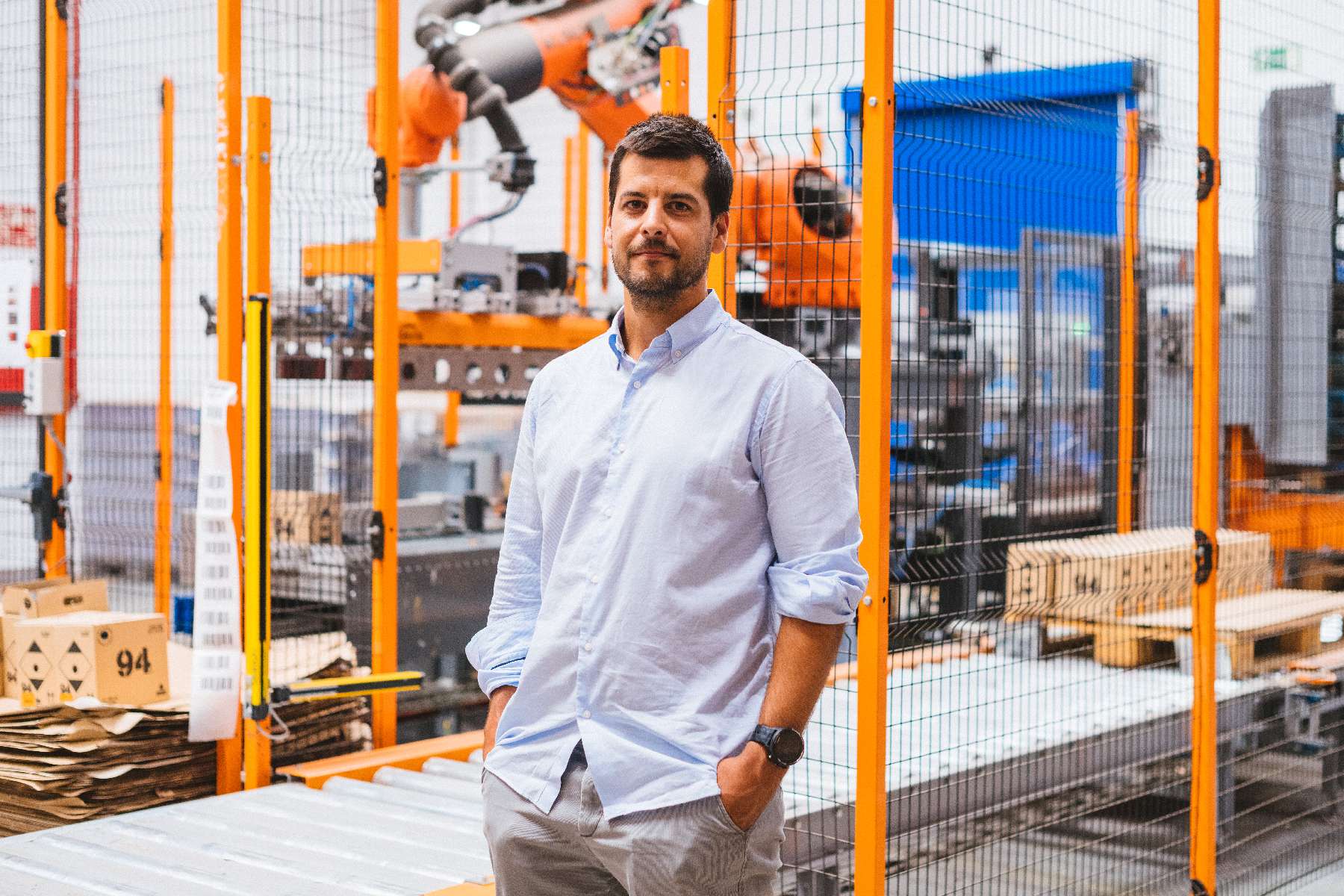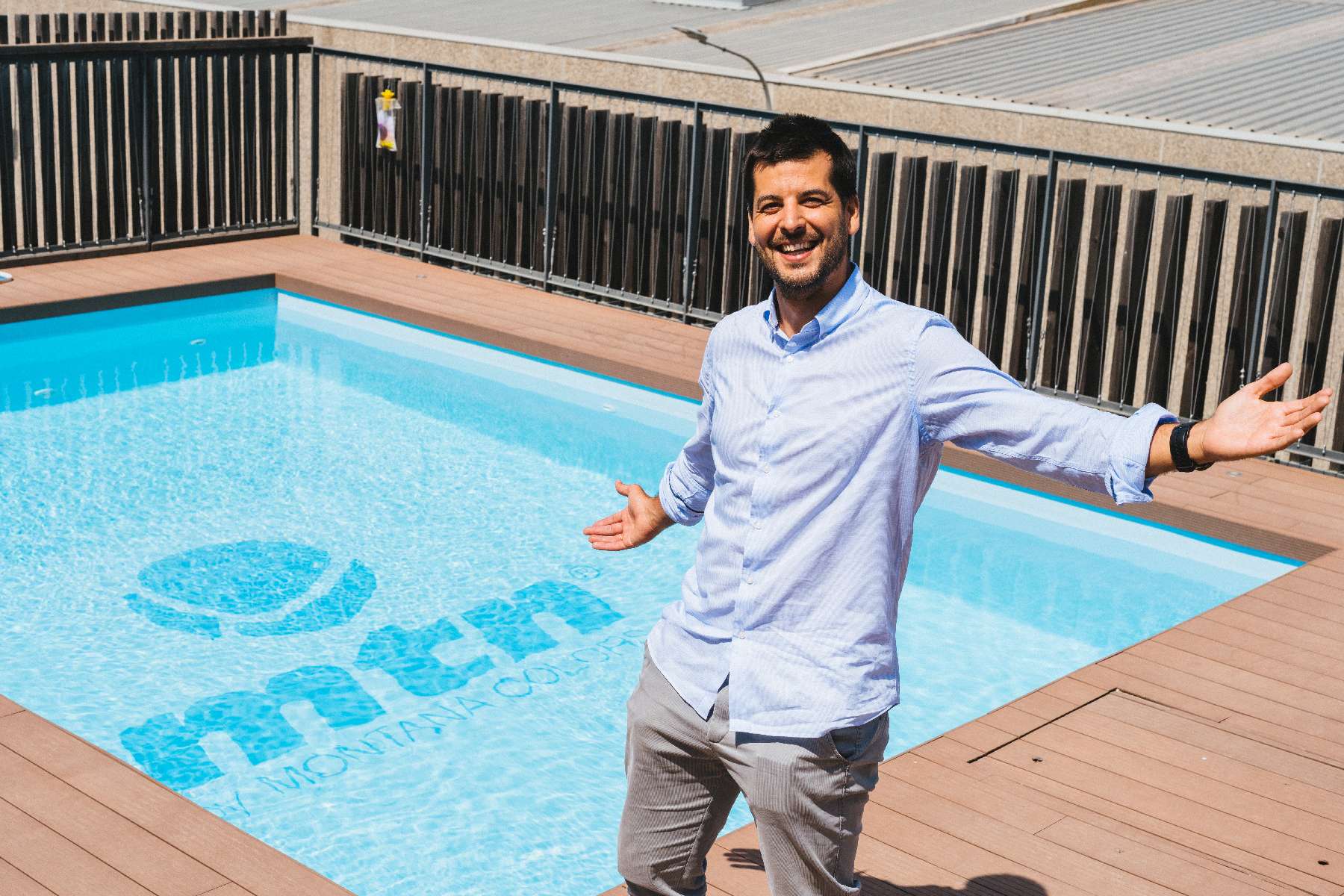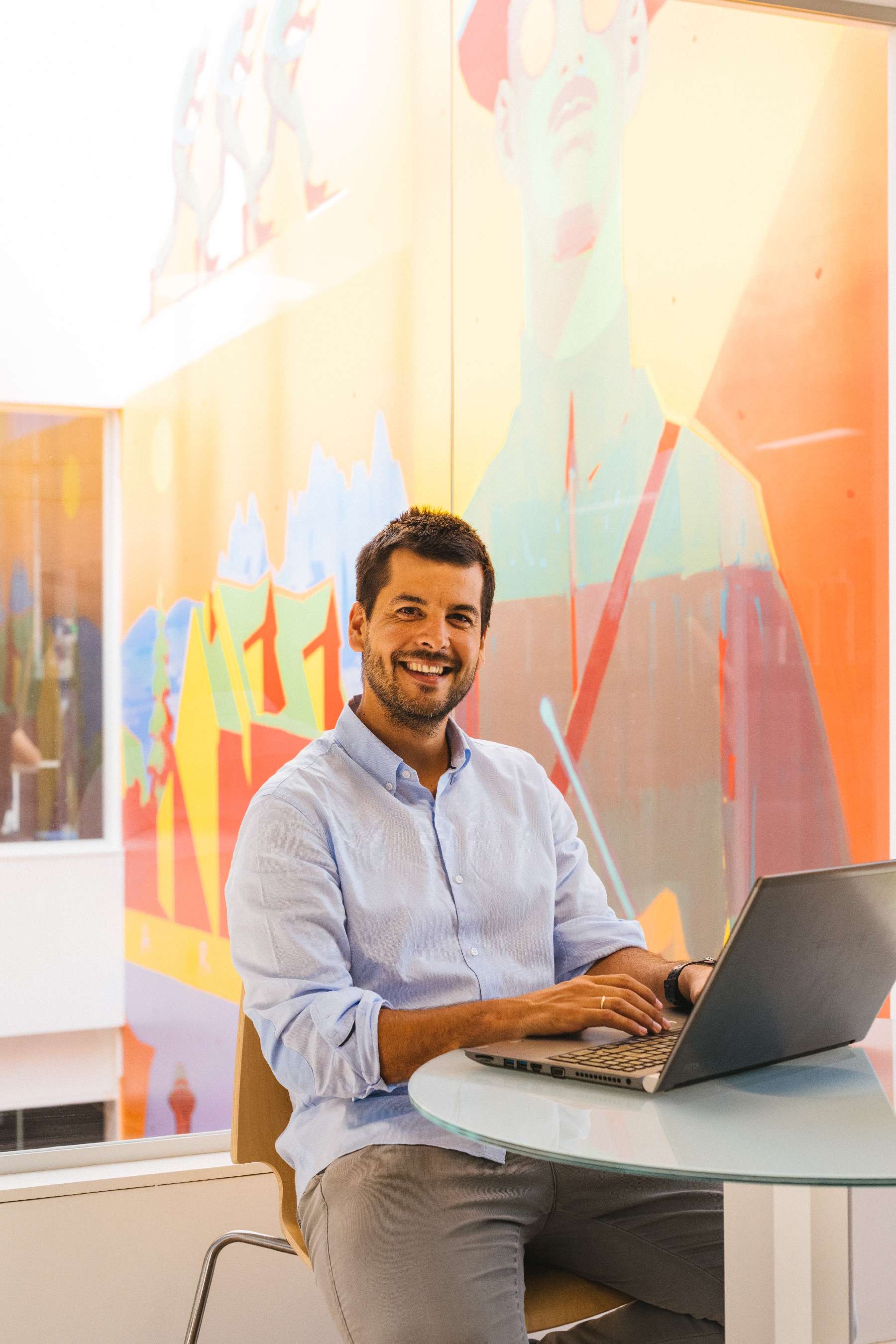- About MTN
Would you like to stay up to date on the latest MTN world news? Products, graffiti, murals, festivals, art and much more.
Return Interview with Carlos Maqueda, Operations Director
Could you sum up what it means to be an operations director?
An operations director is the person responsible for leading the production, maintenance, engineering and occupational risk prevention departments. Together, these departments are responsible for producing the paint and packaging it in aerosols in the safest and most efficient way possible. In addition, as director of operations, I’m responsible for ensuring productive capacity in the medium and long term through strategic investments.
What other positions did you have at Montana Colors before coming to this position?
I started at Montana when I was doing my final university project as an intern in a fictional department, the engineering department. At the end of the project, I was given the opportunity to create it. Jordi Rubio said one thing to me to start this adventure: "…and you, Carlos, what do you want to do with your life?".
At that time, it seemed crazy and a very big responsibility. I was 23 years old, and I was traveling to China to buy the first automatic line in Montana’s history! At that time, any small improvement had a massive impact on production and the company.
Working in the engineering department, I was fortunate to be able to develop lots of projects with different departments. From creating a new donut, collaborating with marketing and automating processes such as label printing and scheduling work orders with the help of the systems department to automating the aerosol filling plant, collaborating with production and maintenance and creating a complete paint manufacturing plant with the help of general management. I even built offices with a rooftop pool to the specifications of our founder.
I've always liked drawing up plans, but when you see something built and working, it's just spectacular!

Machinery, infrastructure, legislation, budgets: your position implies a 360-degree view of the development of operations. How important is it to have a variety of skills in your job?
The field of operations requires having an alert mind and the ability to adapt quickly. It’s important to know each department well. In my case, having studied industrial engineering and having been lucky enough to carry out so many different projects in my previous position helps. But having a powerful team is more important than being versatile, a team specialized in each area, which allows you to make the right decisions. That is what allows you to develop operations excellently.
Which part is the hardest part of an operations manager's routine?
One of the most complicated parts is managing a decrease of operations at the production centers. Operations are based on people. Making decisions that involve the reduction of staff is always complicated.
And the most gratifying or personally fulfilling?
I personally love it when I see the professional growth of the people that I’ve been lucky enough to contract, train or promote in the team. When you also see that these people surpass you in skills and knowledge in the field in which I began to train them, it's fantastic.
Does your vocation influence your daily life? If so, how?
My calling is to be an inventor. I constantly wonder how things around us work and are manufactured, what technologies are being developed, and what applications they will have in the future. I have the most fun when I'm able to fix something. The last thing I fixed was a refrigerator that had a faulty cell that generates cold with electricity. Fixing it was how I learned the name of Peltier cell!

In the 10 years that you’ve been working in the company, what do you think are the most significant technical aspects that have been improved?
I think Montana has evolved dramatically in many technical areas over the last 10 years. There are certainly two points that I think are worth highlighting.
The first would be how we make the paint. For five years we’ve had a tintometric system. It’s a machine that can dose a manufacturing batch of 1500 kilos (the weight of a car) with an accuracy of 20 grams (the same as two chestnuts) with each of the components contained in the formula. Add to that the great work of the production operators, who treat every kilo with great respect, and the latest technology color controls, which allow us to validate each batch, you have the perfect recipe to position ourselves in the market as a leader when talking about high quality spray paint.
The second, and no less important, is the automation and improvement of aerosol filling processes. In the last 10 years, we’ve radically transformed the packaging plant, improving the quality, efficiency and productivity of the manufacturing lines. We have different degrees of automation that allow us to continue meeting the needs of complicated or short-run products, but we also have the latest technology, with a fully automatic high-speed line. This allows us to supply the market flexibly with our products around the world.
In all your time at Montana Colors, what moments do you remember most fondly?
The moments that I remember well are infinite! The day we put the plants back to full capacity after a furlough due to COVID was one of them. Others would be the inauguration of the Montana BASICS plant in Esparraguera (our paint factory) or when we first saw the PAMASOL machine - the latest automatic packaging line that we incorporated in Montana Air - work for the first time.
Technical staff are essential in a company like Montana Colors. How would you explain it to someone who has no idea about the manufacture of aerosols?
It's funny, I arrived at Montana without knowing how an aerosol worked or how it was made. Manufacturing aerosols requires precision technology and a high degree of safety (it works at high pressures and usually with flammable gases). All of this requires highly advanced solutions that allow safe and efficient packaging. That is why we require technical staff with a desire to learn and develop to overcome all the challenges that allow us to consolidate and continue improving the future of our processes.

What other positions or departments are you in contact with? Who do you have most in common with when it comes to the type of work you do?
As an operations manager I try to stay in contact with all the departments to have a vision as transversal as possible. The people we work with the most are definitely the supply department, which responds to what and when we have to manufacture; and the technical department, which ensures that the quality of our products meets the standard of the brand. They’re also responsible for creating new products every day!
In the most strategic area, we also work with finance, who ensure that we can cope with the constant investments that are made by the engineering department.
What do you think about the departure of Jordi Rubio Rocabert?
For me Jordi has always been a very warm person who not only watched over the company, but the people who form the team. Many of us were contracted by him, so we’ve been lucky enough to work and learn directly from him. Now we have to channel that energy that Jordi invested in us so that Montana can continue with the same essence that it was founded with, maintaining the values that characterize it.
How do you see Montana Colors five years from now?
We’ve planned large investments in new production and distribution centers that will allow us to continue advancing and improving our processes to be more efficient and productive.
In five years, we will see more innovative products, new ranges, we’ll reach more countries in the world, we will have better production plants and we’ll continue to invest in forming a great human workforce, which in the end, is the only thing that achieves all the above.
In five years, I’m convinced that we will look back proudly because once again we’ll have overcome all the bumps in the road to continue being a leader and an original company.
Do you use aerosols in your daily life?
When I have time and can devote myself to playing handyman, the aerosol is my final tool. Some examples are restoring furniture, painting the fender of a motorcycle or a simple vase, a mailbox or a helmet. Right now, I have a couple of new projects: painting a windsurf board and some skis.
 ShareSeptember 14, 2022
ShareSeptember 14, 2022
